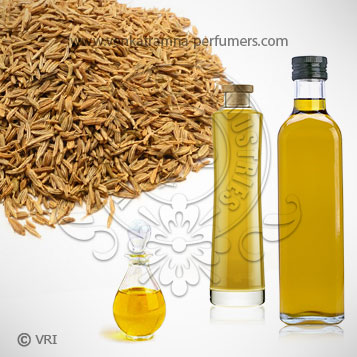
| Botanical Name | Carum carvi |
| Common Name | Meridian Fennel, Persian Cumin |
| Country of Origin | Asia, Europe and Northern Africa |
| Solubility | Soluble in alcohol |
| Specific Gravity | 0.907-0.919 @ 20 C |
| Optical Rotation | +7000' to +81'0 @20 c |
| Refrective Index | 1.484-1.488 @20C |
| PlantPart | Seeds |
| Bland With | Soap, Spices, Medicine |
| CAS No | Not Applicable |
| Flash Point | 85 °C |
| Extraction Method | steam distillation |
Caraway fruits (erroneously called seeds) are crescent-shaped achenes with five pale ridges which are hydrodistilled to produce oil out of it. Caraway seeds from the plant Carum carvi are known as kümmel in German. They are crescent-shaped, long, and have five pale ridges. Caraway is more common in the German kitchen than cumin and is typically used whole, not ground. It has an anise-like flavor and aroma that is popular in breads (especially rye breads), cheeses, sauerkraut, and root vegetables. It also can be found in desserts, liquors, and as an ingredient in beauty products, folk medicine, and breath fresheners.
Also known as Meadow Cumin, Caraway is a very old and well known spice, used as far back as the Stone Age by the evidence in archaeological digs. The Egyptians used it as a flavouring in foods, the Romans in bread-making, and in the Middle Ages it found popularity among the Germans and Austrians in their cooking. Spices are an important bio-nutrients for both food ingredients and nutritional supplements. From ancient times, spices have been used as food additives to enhance the taste and be flavor of food. Apart from these uses, spices also have numerous medicinal properties and used to treat several disorders that form an important part of the Ayurvedic Pharmacopoeia (Indian System of Medicine). Spices have increasingly larger role to play in Indian recipes as the bactericidal, bacteriostatic, fungistatic, antifertility, anti-helminthic and other medicinal properties and believed to aid digestion. In the traditional Indian system of medicine, more than a few spices and herbs have hold and possess several medicinal properties such as antithrombotic, anti-atherosclerotic, hypolipidemic, anti-inflammatory, anti-aggregatory, eicosanoid inhibitor.
Color : colorless or pale yellow with a strong odor,
Aroma : Caraway type
Riboflavin (Vit. B2) 0.327 mg (22%), Niacin (Vit. B3) 4.579 mg (31%), Vitamin B6 0.435 mg (33%), Folate (Vit. B9) 10 µg (3%), Vitamin B12 0 µg (0%), Vitamin C 7.7 mg (13%), Vitamin E 3.33 mg (22%), Vitamin K 5.4 µg (5%), Calcium 931 mg (93%), Iron 66.36 mg (531%), Magnesium 366 mg (99%), Phosphorus 499 mg (71%), Potassium 1788 mg (38%), Sodium 168 mg (7%), Zinc 4.8 mg (48%)
Caraway Seed oil is used as fragrance in soaps and as spice in recipes. It is among the widely used spices which are used as crude or essence in various food products for its pleasant flavor and anti-spoilage properties. The caraway seeds contain essential oils rich in nutraceutical compounds used as food supplements and plant-based medicine. Experimental evidences show that the essential oils (essence) and active ingredients such as carvone possess antioxidant and antimicrobial properties. Evidence shows that the essential oils are more effective when used as mixture suggesting the additive effects of the oil components.